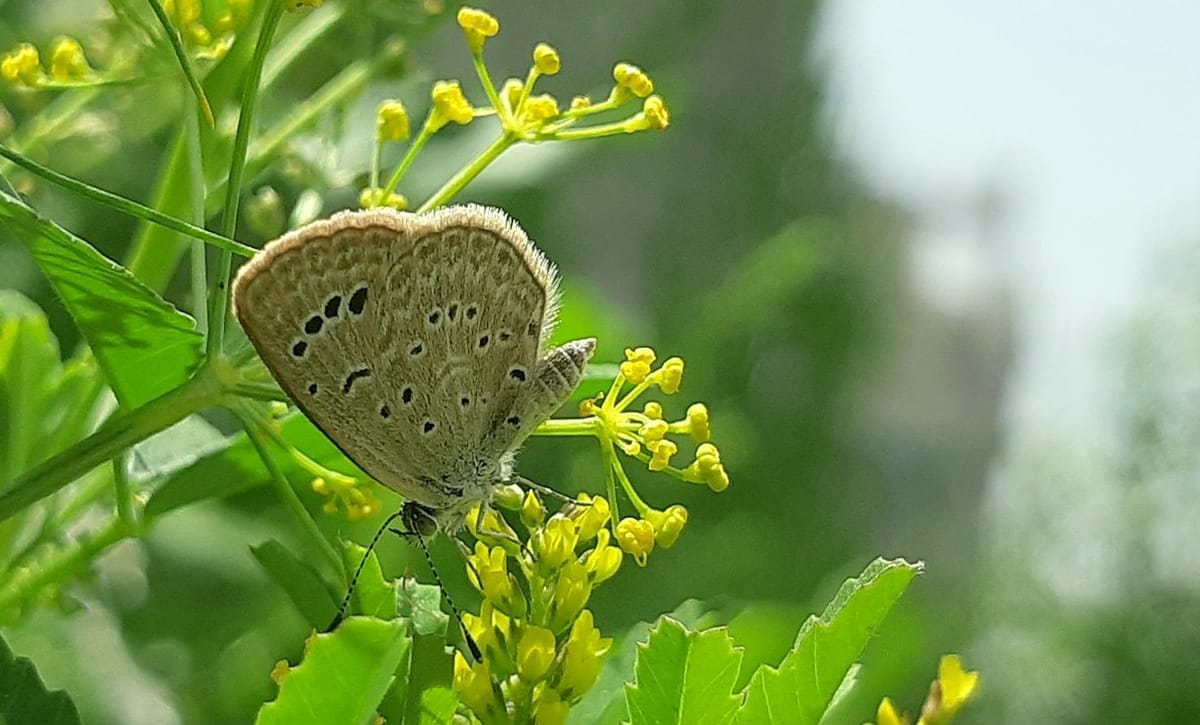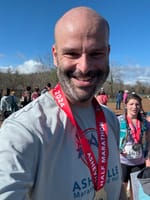My apologies for the delayed publication! I have been super busy with lots of projects. I've committed to a lot but these essays are super important to me and I am committed to writing at least one essay a month.
The school year has been off to a wonderful start as a family of Mourning Doves gave us the privilege of raising their hatchling right on the windowsill of my classroom.
They have built a nest right next to the Air Conditioner of my classroom on the third floor.
The nest placement makes total sense. The AC, wall and window provide cover and protection, so any potential predators would be seen. They are three stories up so no land based predators will be able to get the young.
Its interesting to see the differences in what my students notice versus what I notice. I can't help but look at this through the lens of a parent. I totally get why the mother basically lays on top of her hatchling the entire time. She wants to keep her baby warm and safe. As far as I can tell the hatchling does not oppose being sat upon. It reminds me of how we would swaddle our son when he was a newborn - that constriction offers some kind of good feeling for the baby that helps them.
But sitting on the hatchling also helps reduce the risk of falling I guess.
There are dangers; since the baby can’t fly he is pretty much stuck in a very small space.
The parents have to go get food on occasion meaning they have to leave the hatchling on his own for periods of time. As a parent I felt a real twinge of fear as I saw the hatchling alone just too close to the edge for any parent to feel comfortable.
This family has given me and my students a tremendous gift. We get to watch the development of this baby mourning dove for as long as it takes for him to fly off.
We get to see a family dynamic every single day. We can see the physical differences between the mother and father and how they interact with what I assume is their son.
My students get to closely observe this family every school day. We take photos and videos and sketch them and write out our observations. Over a period of time we will be able to see developmental changes and behavioral changes.
This is a wonderful opportunity for the students to learn to observe closely. The hatchling can’t fly off so we can observe them up close. The kids will learn how to notice details and changes of details and how to articulate those details. Since we are all looking at the same phenomena we are able to go back and forth and figure out how to best express what we observe.
I see how this changes students' ability to express themselves. Their vocabulary about the colors of the Mourning Dove change - They learn to use vocabulary like “Iridescence” in context.
They also have an innate curiosity to come up with questions about the Mourning Dove which gives them an incentive to do research. If I assigned “look up information about Mourning Doves” they would probably do it but it would be reluctant. They have an incentive to learn about Mourning Doves and bring in what they are learning to help inform their observations. There is a personal stake in learning because they are watching the development of this life.
I am using this opportunity for my ecology and biology classes to engage in direct observation. This is better science than passively absorbing information to regurgitate for an exam.
My job, as best I understand it, is to help students see reality as clearly as they can. By helping them cultivate their powers of observation and pattern recognition I am helping them come to conclusions about the nature of the world. In other words I am trying to teach them how to think and not what to think. Spending time deeply looking at things is one of the best ways that I can help students see the world. If they can go out into the world and notice all of the fascinating things that nature provides us and become independently curious about those things then our time together will have been well spent.
Nature leaves us tons of artifacts that are worth examining. Feathers, leaves, acorns, dead insects... all of these are available to us for exploring and observing.
Often times science lab is managed like a cookbook. Students are supposed to follow a set of steps and then get a particular outcome.
This makes for a collective unpleasant experience for everyone involved. The kids get stressed about lab because they are generally terrible at reading directions and following them. They also know that there is a particular outcome they are supposed to get so they are worried about doing it right.
For the teacher lab is a special moment of hell. Having 20-30 kids repeatedly shout "Mr. T! Mr. T! Am I doing this right? Am I doing this right? now what?" is awful. Nobody enjoys lab for the most part.
The whole process of how lab is organized is anathema to the spirit of scientific discovery. Science, stripped of all the big words and conventions, is about observing a phenomena as accurately as you can and then conveying what you discover to an audience as clearly as you can. That's it. If you do that you are engaged in the scientific process.
So when my student noticed that the feathers of the fledgling reminded him of fish scales he was engaged in scientific discovery. When a student notices that an elephants eye is much smaller than she expected given how large the elephant is she was engaged in scientific discovery. I didn't tell the students to focus in on those details these are the things that they noticed. Their curiosity drove them to discover those things.
When you let students explore and just direct them to capture what they notice as best they can the whole process becomes a joy for everyone.
My movie, Tabula Rasa, is being edited as we speak! I've hired an excellent editor and he is going through the slog of organizing the footage and coming up with a rough cut.
I thought I finished with my videos but I cobbled together a great little bit to highlight the behind the scenes star of the movie - Chef Jason Rodriguez! Check out the amazing catering that he provided for the whole week.
I am continuing with gymnastics strength training. Check out my progress on the pistol squat here: Transformers Issue #3
I have been volunteering with an organization called the Elham Fund. They are donating medicine and money to families in Gaza. They are a small group but because of their family ties in Gaza they have been very effective at helping hard to reach families. I am writing and narrating their newsletter which focuses on telling stories of people in Gaza. I'm pleased to share that this effort has led to over $10,000.00 in donations to purchase food, medicine and hygienic supplies!
You can read the first issue of the newsletter here. I strongly urge you to subscribe to read these peoples stories and consider donating to the Elham Fund; it is entirely run by volunteers and there isn't a single penny that goes to administrative costs - every cent goes to helping families in Gaza.



Member discussion: